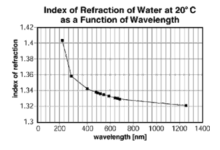How To Send ACT Scores To Universities And Colleges

How To Send ACT Scores To Universities And Colleges has become very easy and well accessible for students who have taken the ACT test to do. Some universities and colleges might require you to send in your results manually while others may require self-reported results.
When Will You Receive Your Scores?
If you took the ACT without the writing test, you will be able to see your scores online about two weeks after your test date by logging on to your ACT account. If you took the writing test, you’ll be able to see your scores for the English, math, reading, and science tests at the same time as everyone else, but your writing score won’t be available online until about two weeks later.
These will be just your raw scores (the number of questions you got correct); it takes a little longer for the ACT to prepare full score reports for each test taker. If you took the ACT without the writing test, your score report will be released about two to eight weeks after your test date. If you took the exam with the writing test, expect to see it within four to eight weeks.
How To Send ACT Scores to Universities and Colleges
Once your score report is ready, it will be sent automatically to you, to your high school, and to any of the colleges or scholarship programs you listed when you registered.
You may decide that you want to review your scores before letting colleges see them. If you take this route, you should decline to list college codes when you register for the ACT. Then, once you receive your scores, you can decide whether you want to send them on to colleges or retake the exam to try to do better. (Keep in mind that some colleges’ admissions policies require applicants to send in scores from every test date.)
Your score report is an information-rich document containing a total of eight scores—or nine if you took the writing test—plus several ways of breaking down and understanding how you did on the exam.
You can follow these steps to send your ACT test scores:
- Log in to your ACT account
- Click on “Send Scores” or “Score Reporting”
- Enter the institution’s code (find it on the ACT website or the institution’s website)
- Select the test date and score type (e.g., ACT Composite)
- Confirm your information and submit

How to Read Your Score Report
On each of your ACT subject tests, the number of correct answers is tallied up—that’s your raw score (no points are deducted for wrong answers). The raw score is then converted to a scaled score, based on a scale of either 1 to 36 (for all tests but the writing test) or 2 to 12 (for the writing test).
Why are scores scaled?
Scaling scores helps test makers create a consistent standard, so scores can be compared from one test date to another—even though the content of the exam may vary.
In addition to your scores for the math, science, English, and reading tests (and the writing test, if you took it), you’ll be given an overall score, called the composite score. The composite score is simply the average of your math, science, English, and reading scores, rounded to the nearest whole number.
You’ll also receive a STEM (science, technology, engineering, and math) score, which is an average of your math and science test scores, and an ELA (English language arts) score, which is an average of your English, reading, and writing test scores. If you don’t take the writing test, you won’t get an ELA score.
College Readiness Benchmarks
On your score report, you’ll also see a range of ACT® college readiness benchmarks—tools that can be used to estimate how well you might do in first-year college courses in English, the sciences, and math. You’ll find a college readiness benchmark for STEM, as well as separate benchmarks for each of the following tests: English, reading, science, and math.
How does it work? Let’s say the college readiness benchmark for the English test is 21. If your score on the English test is 21 or higher, according to ACT analysis, you have at least a 50% chance of earning an A or B when you take a first-year college English course and a 75% chance of earning a C or better. You can use this information to identify the areas you need to work on while you’re still in high school so you can boost your chances of success in college.
Note that the college readiness benchmark for STEM shows you how you might do in first-year coursework designed specifically for science, engineering, math, or tech majors, not how you’d fare in first-year science, engineering, math, or tech courses that are open to anyone. Remember that a chemistry class intended for chemistry majors will likely be much more advanced than a survey course like Chem 101.
The Breakdowns of Your Score by Topic
For each test, you’ll also see a breakdown of your test performance based on general topics or themes. For example, for the math test, you will see a breakdown of the questions you answered correctly in various categories like algebra, functions, and geometry, as well as three broader categories: preparing for higher math, modeling, and what is called integrating essential skills.
Don’t get too hung up on this sub-score information. After all, each test on the ACT contains only a sampling of questions in different areas. The math test, for example, contains 60 questions in total. There’s no way it could definitively reveal your aptitude in specific topics if there are just a handful of questions on each. However, if you did very well in one topic or very badly in another, take notice.
The score breakdown is more helpful for the writing test since it offers insight into why the essay scorers evaluated your writing as they did.
What Else Is on Your Score Report?
Your score report will also show how your scores compare against those of other students in your state and students nationwide—giving you a sense of how you stack up against others.
You’ll also see a score range for each of your scores. Score ranges are intended to show that a single test score can’t fully capture all of your skills. For example, if you got a 23 on the science test, your score range for science might be 21–25.
The fact is, though, that it may be hard not to feel boxed in by your scores and by all of the other analyses that appear on your score report. Try not to be! Yes, even with low scores on the ACT —or any other standardized test—you can still be successful in college. No one exam can accurately depict all of your knowledge or the many other characteristics that may give you an advantage in school or the workplace.
And the fact is, you may have simply had a bad day. That’s why admissions counselors don’t look just at test scores; they consider grades, recommendations, essays, non-academic achievements, and interviews, all of which paint a much wider picture of who you are. The future is ultimately in your hands.
Career Guidance on Making a Good College and University
In addition to a breakdown and analysis of your test scores, your score report will contain information you can use for career planning. When you registered for the ACT, you were asked about your interests outside of school.
Based on how you replied, your score report will include a recommendation about the type of career that might be right for you, according to four broad categories: working with people, working with data, working with things, and working with ideas. You’ll also receive a list of corresponding careers.
For instance, if your answers placed you as someone who’d do well working with data and with people, your job suggestions might include a financial manager, travel guide, or FBI agent.
During the registration process, you were also asked to specify the major that you’re thinking about pursuing in college. On your score report, you’ll see a small bar graph that shows whether this major has a low, moderate, or high chance of being a good fit with your interests. The ACT compares the interests you highlighted with the interests of college students who have already embarked on the major you selected.
Finally, your score report will show your progress toward the National Career Readiness CertificateTM, a measurement developed by the ACT organization that shows how qualified a person is—or isn’t—in the skills and knowledge needed for success in the workplace.
These may be different skills and knowledge than are needed for academic success. Using your composite score as an estimate, your score report will show how close you may be to earning the certificate.
How Colleges and Universities View Your ACT Score
The score report you receive is not the same one that your colleges of choice receive. The version that colleges get will include your scores, score ranges, state and national rankings, and score breakdowns—just as they appeared on yours.
In addition, however, they will see information that you provided, such as your choice of major, your G.P.A., what you’re looking for in a college, and their analysis of your “chances of success” at their college. Again, take this with a grain of salt.
You never know how college admissions counselors arrive at their decisions, but most consider a student’s full application when deciding if he or she should be admitted, not simply a prediction using a formula.
How Your High School Will View Your Result
There’s also a third version of your score report that is sent to your high school. Geared toward helping your high school guidance counselor point you in the right direction, it includes recommendations based on your test scores and your answers to certain questions during registration.
For instance, based on your ACT scores, show which of your target colleges might be the best fit for you compared with the scores of other students who’ve attended those schools. It also offers recommendations for majors and career paths and indicates areas where you might be lagging academically.








